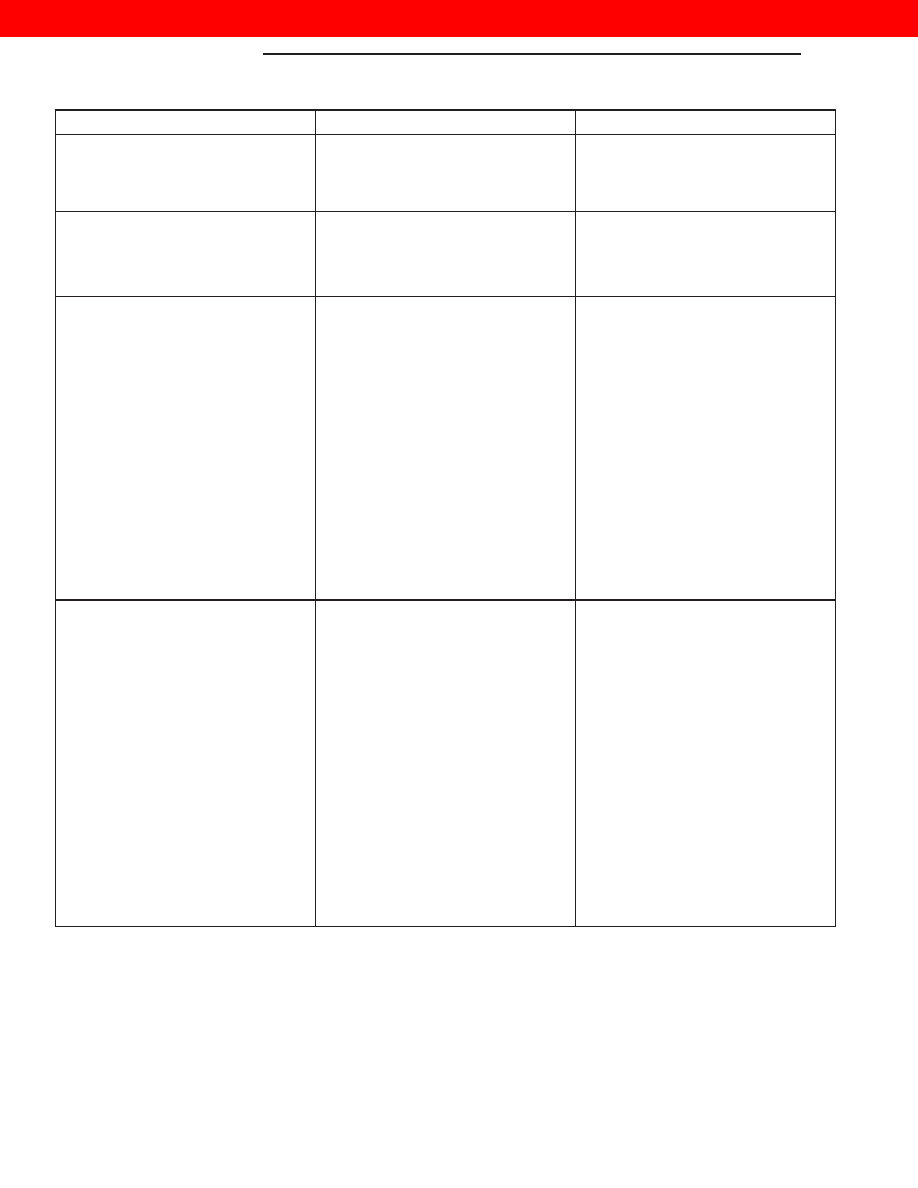Jeep Grand Cherokee WJ. Manual - part 74

CONDITION
POSSIBLE CAUSES
CORRECTION
COOLANT LOSS TO THE
GROUND WITHOUT PRESSURE
CAP BLOWOFF. GAUGE IS
READING HIGH OR HOT
1. Coolant leaks in radiator, cooling
system hoses, water pump or
engine.
1. Pressure test and repair as
necessary. Refer to Testing Cooling
System For Leaks in this group.
HOSE OR HOSES COLLAPSE
WHEN ENGINE IS COOLING
1. Vacuum created in cooling
system on engine cool-down is not
being relieved through pressure/
vent cap.
1. Cap relief valve stuck. Refer to
Pressure/Vent Cap in this group.
Replace if necessary.
NOISY FAN
1. Fan blades loose.
1. Replace fan blade assembly.
Refer to Cooling Sytem Fans in this
group.
2. Fan blades striking a surrounding
object.
2. Locate point of fan blade contact
and repair as necessary.
3. Air obstructions at radiator or air
conditioning condenser.
3. Remove obstructions and/or
clean debris or insects from radiator
or A/C condenser.
4. Thermal viscous fan drive has
defective bearing.
4. Replace fan drive. Bearing is not
serviceable. Refer to Viscous Fan
Drive in this group.
5. A certain amount of fan noise
(roaring) may be evident on models
equipped with a thermal viscous fan
drive. Some of this noise is normal.
5. Refer to Viscous Fan Drive in this
group for an explanation of normal
fan noise.
INADEQUATE AIR CONDITIONER
PERFORMANCE (COOLING
SYSTEM SUSPECTED)
1. Radiator and/or A/C condenser is
restricted, obstructed or dirty
(insects, leaves etc.).
1. Remove restriction and/or clean
as necessary. Refer to Radiator
Cleaning in this group.
2. Thermal viscous fan drive is
freewheeling.
2. Refer to Viscous Fan Drive for
diagnosis. Repair as necessary.
3. Engine is overheating (heat may
be transferred from radiator to A/C
condenser. High underhood
temperatures due to engine
overheating may also transfer heat
to A/C components).
3. Correct overheating condition.
Refer to text in Group 7, Cooling.
4. The Cooling system is equipped
with air seals at the radiator and/or
A/C condenser. If these seals are
missing or damaged, not enough
air flow will be pulled through the
radiator and A/C condenser.
4. Check for missing or damaged air
seals and repair as necessary.
7 - 12
COOLING SYSTEM
WJ
DIAGNOSIS AND TESTING (Continued)
2000 JEEP GRAND CHEROKEE